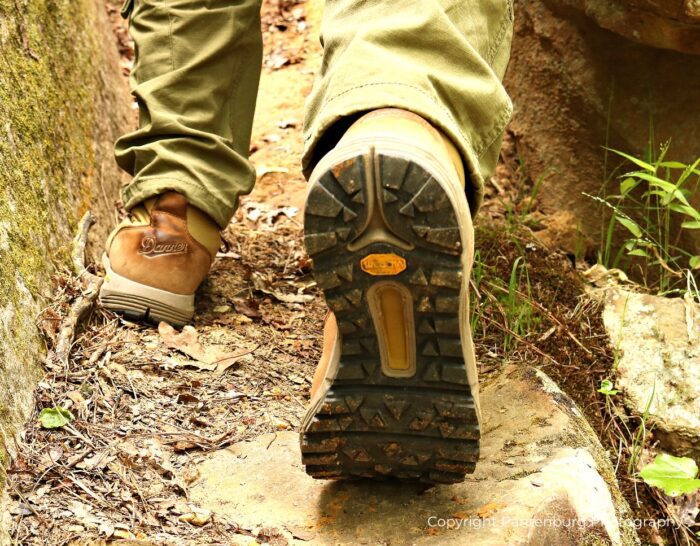Sore feet means hiking or backpacking won’t be fun. Here are some tips for making sure your boots fit correctly before you leave the trailhead.
by Leon Pantenburg
There are many reasons why your feet get sore when hiking. In fact, that topic got its own post. And several readers agreed that sore feet are awful.
But don’t even consider other aspects of foot comfort without the correct – for you – fitting boots or shoes. (We’ll call the footwear in this post by the generic term “boots”.)
Pat S., a former soldier who spent considerable time with the U.S. Army’s 10th Mountain Division commented: “People are so often in the wrong size boot or shoe and that causes its own problems.”

1986 – Wind River Range, Wyoming: My boots fit fine, and sore feet didn’t take away from the sheer awesomeness of the mountains.
These are the steps to choosing the right fit:
1. Go shopping late in the day, during the evening if possible. Everybody’s feet expand during the day, so the first thing in the morning your feet will be smaller than they will be later. Make sure your feet are at their full size when you try on boots.
Think about where you will be wearing the footwear.
Recently, I ran into Pacific Crest Trail through hiker Nathan (trail name “Potatoes”) at the Bend, Oregon post office. I steered our conversation toward footwear. Nathan had to go up a whole size on his hiking shoes because of his pack weight and the mileage.
2. Width is important: If you typically wear medium width, give some thought to going to wide. Some of the women through hikers, Nathan told me, choose their equivalent size men’s shoes for hiking because they tend to be wider.
3. Test the boots wearing your favorite hiking socks. I wear wool socks year-round, and they are thicker and bulkier than many other hiking socks. Don’t let your socks scrunch up your toes.
4. Include your orthotics: Your favorite insoles may affect the fit of some new boots. Make sure you try the boots with and without the orthotics. If the boots aren’t comfortable with the orthotics, keep looking.
5. Compare your feet to the footbed – make sure they match.
6. Slip your finger between the heel of the boot and the back of your foot. If the fit is right, this should be no problem. A good rule of thumb (pun intended!) is that you should have a thumb’s width between the end of your toes and where they would touch the end of the boot.
7. Your toes should have enough room, and you should be able to wiggle them at all times.
8. Wear the boots and walk around the store. Take a few steps and see how they feel. Walk until the boots warm up. Stop and tighten the laces a few times.
9. No rubbing against your heel. Even a stiff, new boot should not cause rubbing or hot spots in any area.
Please click here to check out and subscribe to the SurvivalCommonSense.com YouTube channel – thanks!
There are many factors that determine how comfortable your hiking footwear will be. Consider these things when you are shopping:
- Shoes or boots for hiking?
- Waterproof or not?
- What are the best socks for the conditions?
- How do you avoid getting sore feet?
- Will the shoes or boots keep your feet warm?


Leave a Reply